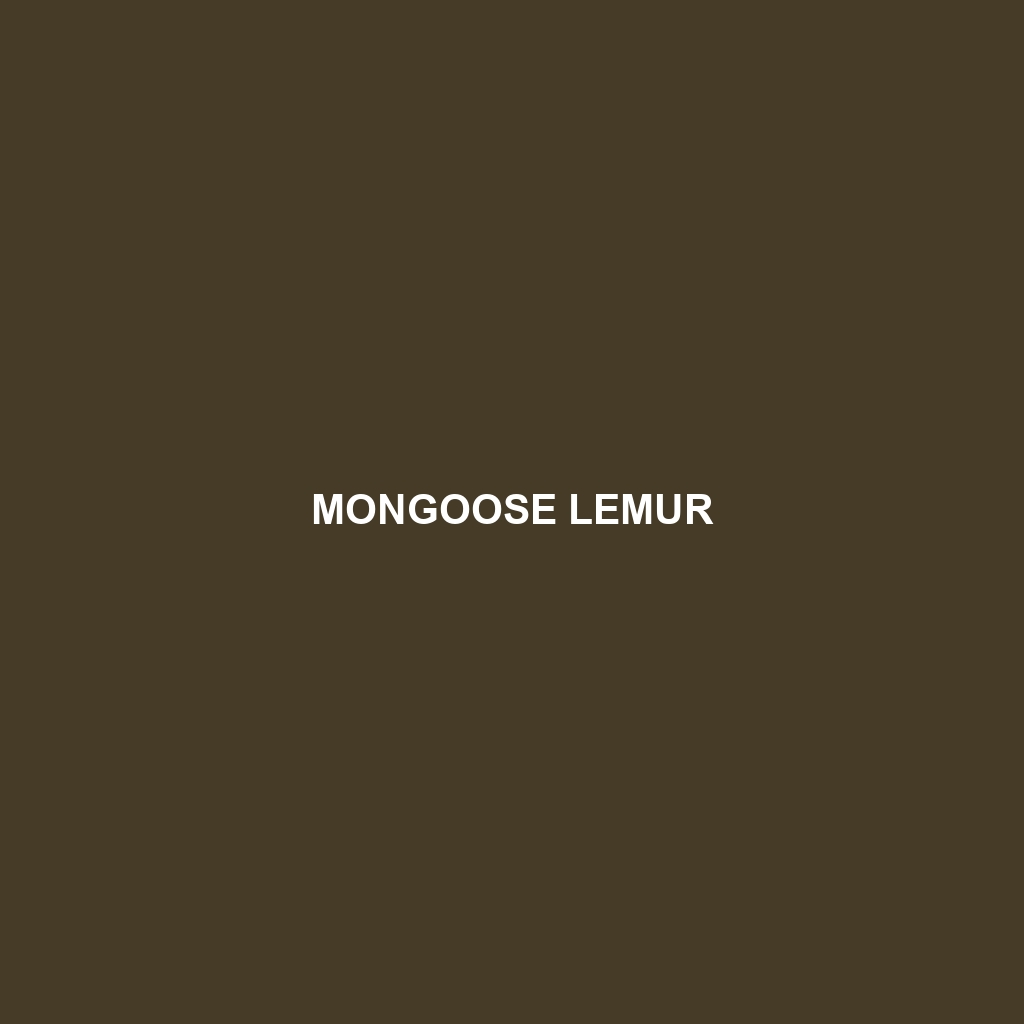Mongoose Lemur Species Description
Common Name: Mongoose Lemur
Scientific Name: Eulemur mongoz
Habitat
The Mongoose Lemur is primarily found in the forests of Madagascar and the nearby Comoros Islands. These lemurs thrive in both tropical rainforests and dry deciduous forests, showcasing a preference for areas with rich vegetation and abundant food sources. The subtropical climate of these regions, characterized by humid summers and warm winters, fosters an environment conducive to their survival.
Physical Characteristics
Mongoose Lemurs are medium-sized primates, typically weighing between 2.5 to 3.5 kg. Adults measure about 45 to 55 cm in length, excluding their bushy tails, which can add another 50 cm. Their fur is predominantly brown or gray, with distinctive orange to reddish hues on their faces, hands, and feet. One of their most notable features is the white ring around their eyes, which enhances their expressive facial features and aids in social communication.
Behavior
Mongoose Lemurs are primarily nocturnal, making them most active during the night. They are social animals, often living in small troops of 2 to 10 individuals, and exhibit hierarchal social structures. Mongoose Lemurs are known for their playful behavior and curious nature. They communicate through a combination of vocalizations, scents, and physical interactions, which helps maintain group cohesion.
Diet
The diet of the Mongoose Lemur consists mainly of fruits, flowers, and leaves. They are particularly known for their fondness for figs, which provide essential nutrients. During the dry season, their diet can shift to include bark and buds, showcasing their adaptability in feeding habits. Their role as frugivores also supports seed dispersal, making them vital to the ecological balance of their habitat.
Reproduction
Mongoose Lemurs have a distinct breeding season that aligns with the start of the rainy season, typically occurring between September and November. After a gestation period of about 120 days, females usually give birth to a single offspring, though twins can occur on rare occasions. Females exhibit nurturing behaviors and often carry their young on their backs until they are old enough to explore independently.
Conservation Status
The Mongoose Lemur is currently classified as Endangered by the International Union for Conservation of Nature (IUCN). Habitat loss due to deforestation, agriculture, and hunting poses significant threats to their populations, leading to a decline in their numbers. Conservation efforts are essential to protect this unique species and its habitat.
Interesting Facts
One fascinating aspect of the Mongoose Lemur is their ability to change their diet according to seasonal availability. Additionally, they exhibit sexual dimorphism, with males being slightly larger than females. The Mongoose Lemur is a symbol of Madagascar’s diverse wildlife and plays an essential role in local ecotourism.
Role in Ecosystem
The Mongoose Lemur plays a crucial role in its ecosystem as a seed disperser, contributing to the regeneration of forests. Their feeding habits promote plant diversity, which in turn supports various species within their habitat. As a prey species, they are also a vital part of the food web, sustaining predators in the region.
